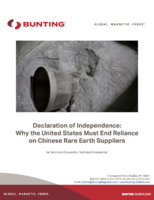BACnet aims to improve standardized communications.
Press Release Summary:
Recommended for public review by BACnet committee during ASHRAE's 2008 Annual Meeting, addendum t defines XML syntax, which can represent building data in consistent, flexible, and extensible manner. XML can be used for exchanging files between systems, integrating buildings with energy utilities, and expanding enterprise integration with richer Web services. In 3½-day session during meeting, BACnet committee moved 8 additional addenda toward publication.
Original Press Release:
BACnet Looks at Improving Standardized Communications
ATLANTA - A new standard way of representing building data will give BACnet new capabilities for standardized communications between a wide range of applications.
A definition for an XML syntax which can be used to represent building data in a consistent, flexible and extensible manner, is defined by addendum t, recommended for public review by the BACnet committee during ASHRAE's recent 2008 Annual Meeting.
The Extensible Markup Language (XML) is a popular technology in the data processing and communications worlds, based on its ability to model a wide range of data, and its ability to be transformed and extended.
"With this new IT-friendly way of representing building data, we are opening up a whole range of possible new ways to share data. XML can be used for exchanging files between systems, integrating buildings with energy utilities, and expanding enterprise integration with richer Web services." said Dave Robin, incoming BACnet chair.
In a busy three-and-a-half day session during the meeting, the BACnet committee moved eight other addenda toward publication.
Addendum g, a new means for securing BACnet messages using updated encryption technologies, was recommended for another public review following an extended period of revision and analysis by the Network Security working group following the preceding public review.
The Life-Safety and Security working group, comprised of BACnet and physical security industry experts, recommended another public review for Addendum j, which proposes physical access control extensions for BACnet.
"We received only nine comments on the previous public review," said working group convener David Ritter, "and they were all positive and constructive comments."
The Testing and Interoperation working group revised its definitions of several new types of BACnet operator workstations following the first public review of addendum l last fall.
"These definitions will not only allow users to specify the capabilities of different workstations, but are necessary for defining the tests done on those workstation by BACnet testing labs," said working group convener Carl Neilson.
Addenda h, r and s, all comprised of a number of independent changes, were also recommended for public review.
After reviewing the comments submitted for two addenda, the BACnet committee determined that addenda b and m had passed spring public review and will be submitted for publication. Both addenda are comprised of several independent changes but include user-oriented extensions such as the Event Log object, which keeps a history of BACnet alarms in a standard fashion.
Also during the meeting, outgoing BACnet chair Bill Swan announced the publication of BACnet 2008, incorporating the five addenda that have been approved since the publication of BACnet 2004.
The BACnet committee continues to work on a broad range of other items, such as architectural and theatrical lighting controls, developing standard profiles for various building automation devices, CCTV control, and elevator monitoring.
ASHRAE, founded in 1894, is an international organization of some 50,000 persons. ASHRAE fulfills its mission of advancing heating, ventilation, air conditioning and refrigeration to serve humanity and promote a sustainable world through research, standards writing, publishing and continuing education.
Contact: Jodi Dunlop
Public Relations
678-539-1140
jdunlop@ashrae.org




